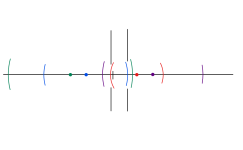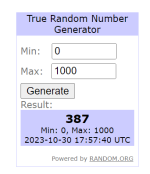For any test, you need to know the accuracy, precision and resolution of the test.
For example, a salinity test might show 3,200 ppm +/- 250 ppm with 99.9% certainty assuming the test is done exactly right and the test equipment and materials are in good condition.
So, this gives you a range of about 2,950 ppm to about 3,450 ppm, which is a range of about 500 ppm.
Note: There is still a 0.1% chance that the number is not within the identified range.
If you have more than one test, you can see if the test ranges all overlap.
If all ranges overlap, then you can estimate that the actual number is likely to be in the range where all tests overlap.
In the illustration below, there are 4 tests with 4 different ranges and they all overlap the area between the two black lines
If all ranges do not overlap, then you can estimate that one or more of the tests is likely to be inaccurate.
This is why it is usually better to have certain tests done using several different methods.
For example, a salinity test where you have zero prior knowledge of what the actual salinity should be should be done with a K-1766 salt test and a calibrated meter at a minimum.
If you can get other estimates of the salinity, then that is usually a good idea as well.

 www.random.org
www.random.org




